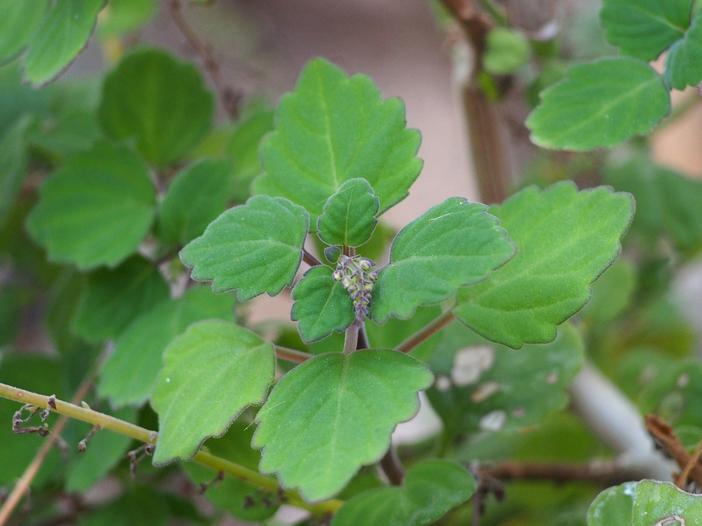Bonsai Mint
(Plectranthus ernstii)
Bonsai Mint (Plectranthus ernstii)
/
/

Agnieszka Kwiecień, Nova
CC BY-SA 4.0
Image By:
Agnieszka Kwiecień, Nova
Recorded By:
Copyright:
CC BY-SA 4.0
Copyright Notice:
Photo by: Agnieszka Kwiecień, Nova | License Type: CC BY-SA 4.0 | License URL: https://creativecommons.org/licenses/by-sa/4.0 | Uploader: Nova | Publisher: Wikipedia Commons


















Estimated Native Range
Summary
Plectranthus ernstii, commonly known as Bonsai Mint, is an evergreen or semi-deciduous subshrub or succulent, native to rocky outcrops and dry slopes in eastern South Africa, particularly in the KwaZulu-Natal province. It typically grows to a height and width of approximately 1 foot (0.3 meters), forming a compact, rounded shape that resembles a miniature tree, which makes it an attractive choice for bonsai enthusiasts. The plant features fleshy, rounded leaves and square stems, characteristic of the Lamiaceae family. During the spring, summer, and fall, Bonsai Mint produces inflorescences of tubular flowers that can be blue, purple, or white, adding a splash of color to the foliage.
Bonsai Mint is valued for its ease of maintenance, drought tolerance, and suitability for container gardening, including bonsai cultivation. It is often used in rock gardens, as a ground cover, or in mixed succulent plantings. This plant thrives in well-drained soil and can tolerate a range of light conditions from full sun to full shade. While it prefers drier conditions, it can adapt to medium water availability. Gardeners should be cautious of overwatering, which can lead to root rot. Bonsai Mint is not known for significant pest or disease problems, but it can be sensitive to cold temperatures and may require protection in cooler climates.CC BY-SA 4.0
Bonsai Mint is valued for its ease of maintenance, drought tolerance, and suitability for container gardening, including bonsai cultivation. It is often used in rock gardens, as a ground cover, or in mixed succulent plantings. This plant thrives in well-drained soil and can tolerate a range of light conditions from full sun to full shade. While it prefers drier conditions, it can adapt to medium water availability. Gardeners should be cautious of overwatering, which can lead to root rot. Bonsai Mint is not known for significant pest or disease problems, but it can be sensitive to cold temperatures and may require protection in cooler climates.CC BY-SA 4.0
Plant Description
- Plant Type: Subshrub, Succulent
- Height: 1-1.5 feet
- Width: 0.667-1 feet
- Growth Rate: Moderate
- Flower Color: Blue, Purple, White
- Flowering Season: Spring, Summer, Fall
- Leaf Retention: Evergreen, Semi-Deciduous
Growth Requirements
- Sun: Full Sun, Part Shade, Full Shade
- Water: Very Low, Low, Medium
- Drainage: Fast
Common Uses
Bee Garden, Bird Garden, Butterfly Garden, Deer Resistant, Drought Tolerant, Fire Resistant, Fragrant, Hummingbird Garden, Low Maintenance, Rock Garden
Natural Habitat
Rocky outcrops and dry slopes in eastern South Africa
Other Names
Common Names: Bonsai Spurflower, Bonsai-Spoorsalie, Kransworsies
Scientific Names: , Plectranthus ernstii,
GBIF Accepted Name: Plectranthus ernstii Codd